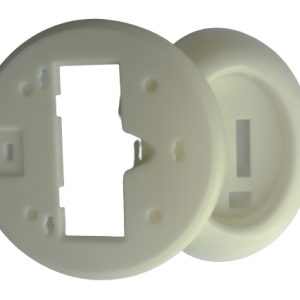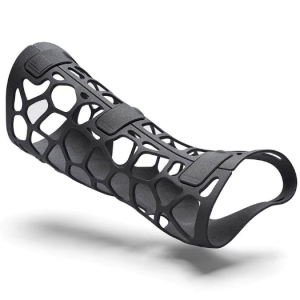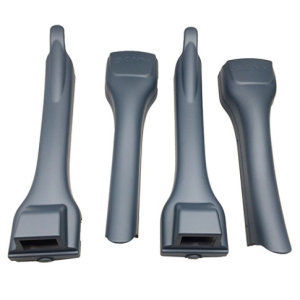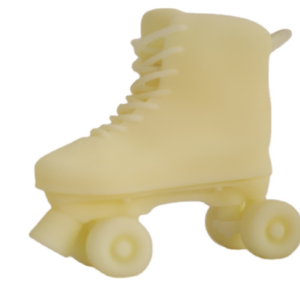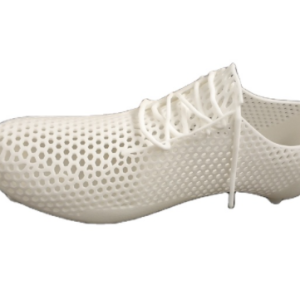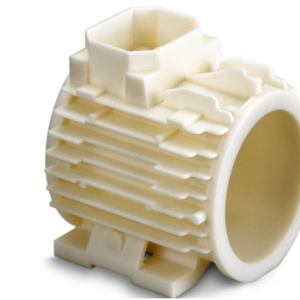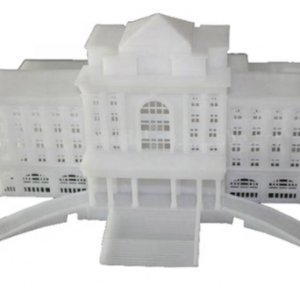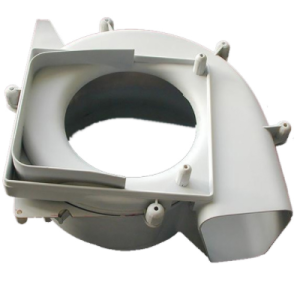High-Precision Prototyping with Stereolithography Technology
Stereolithography, commonly known as SLA, is a highly regarded 3D printing process that uses ultraviolet light to selectively harden layers of liquid resin into solid shapes. This method is celebrated for its impressive detail, excellent surface quality, and ability to produce complex geometries with precision. Ideal for engineers, designers, and manufacturers, SLA is perfect for applications requiring sharp definition and smooth finishes.
Trusted partnerships, unrivaled results CAD Deziner’s track record























Detailed, Precision Parts, No Tooling Required
SLA printing is the go-to option when accuracy and fine details are essential. The process eliminates the need for costly moulds or lengthy tooling setups. Instead, a focused laser cures resin one layer at a time to create components with exceptional clarity and detail. This method supports quick turnarounds, rapid design changes, and efficient production of low-volume custom parts. It is ideal for industries that need functional prototypes or tailored designs produced at high speed without compromising quality.
Finishing Options for SLA Printed Items
Standard Matte
We gently sand the supported sections with 220 or 320 grit paper before media blasting, resulting in a smooth, matte texture across the part. The result is a clean, consistent surface with a professional appearance.
Natural Finish
During preparation, supported areas are softly sanded with 220 or 320 grit abrasives to refine the part’s surface. Light scratches may remain visible after sanding, depending on the geometry and complexity.
Strip and Ship
If selected, parts are sent with only the supports removed. Small surface imperfections or grid patterns from the support structure may still be present.
Quick Clear (Accura ClearVue only)
Parts are lightly sanded on the supported areas, then finished with a glossy transparent coat. While some layer lines may still be visible, the clear coat boosts the part’s natural transparency and visual appeal.
Custom Finish
CAD Deziners offers tailored post-processing services for SLA prints, including sanding, polishing, painting, heat treatment, and plating. Let us know your unique specifications, and we’ll deliver accordingly.
How SLA Printing Is Used
Why Use SLA for Your Next Project?
Remarkable Accuracy and Definition
SLA is recognised for its ability to print with extremely tight tolerances and intricate detail. Each part is built layer by layer, allowing for sharp features and complex internal structures that would be difficult or impossible with other methods.

Outstanding Surface Finish
One of SLA’s major benefits is the naturally smooth surface of printed components. Parts often require minimal additional finishing, making SLA ideal when appearance matters, such as for client-ready prototypes or visible assembly parts.

Diverse Material Selection
As one of the first 3D printing technologies ever developed, SLA remains a reliable and widely adopted choice. The process uses a directed light beam to selectively harden resin into detailed parts. Due to its high level of accuracy, SLA is suitable for professionals across aerospace, industrial design, consumer products, and more. It’s an excellent solution when your project calls for tight tolerances and visual refinement.

Why Work with CAD Deziners?
Extensive Customisation
You can tailor each order to suit your exact requirements. Choose from a range of materials, surface finishes, tolerance levels, and industry certifications to ensure your parts match expectations precisely.
Hassle-Free Delivery
Your printed parts will arrive at your location, ready to use; no need to coordinate suppliers, shipping, or logistics. We manage the entire process, from print to packaging.
Premium Quality You Can Rely On
Each part is produced to a consistently high standard, giving you peace of mind that what you receive is built for performance and reliability.
SLA 3D Printing Materials – Technical Specifications
| Material | Surface Quality | Minimum Detail Size | Minimum Wall Thickness | Maximum Build Size (mm) |
|---|---|---|---|---|
|
ABS Resin (SLA) |
Ultra-smooth finish |
0.2 mm |
1.0 mm |
750 × 750 × 350 |
|
Flexible Resin (SLA) |
Ultra-smooth finish |
0.2 mm |
1.0 mm |
600 × 600 × 400 |
|
Accura 25 (SLA) |
Very smooth finish |
0.2 mm |
0.8 mm |
250 × 250 × 250 |
|
Transparent Resin (SLA) |
Very smooth finish |
0.2 mm |
0.8 mm |
600 × 600 × 400 |
|
High Temperature Resin (SLA) |
Very smooth finish |
0.2 mm |
1.0 mm |
600 × 600 × 402 |
SLA 3D Printing Materials – Properties and Applications
| Material | Mechanical & Thermal Properties | Typical Applications |
|---|---|---|
|
Accura ABS White (SL 7820) |
Tensile Strength: 46–48 MPa; Heat Resistance: 51 °C |
Used for visual prototypes, functional mockups, and anatomical models |
|
Accura ABS Black (SL 7820) |
Tensile Strength: 45–47 MPa; Heat Resistance: 51 °C |
Ideal for product development, concept modelling, and educational models |
|
Flexible 80A |
Tensile Strength: 8.9 MPa; Temperature Range: 38–56 °C |
Best for soft-touch components like gaskets, grips, seals, and biomechanical parts |
|
Accura 25 |
Tensile Strength: 38 MPa; Temperature Range: 51–63 °C |
Excellent for short-run production and flexible, snap-fit components |
|
Transparent Resin |
Tensile Strength: 45–65 MPa; Temperature Range: 38–56 °C |
Used for decorative pieces, clear enclosures, resin art, and see-through prototypes |
|
SLA Tough Resin |
Max Temperature: Up to 80 °C |
Ideal for strong, impact-resistant models such as enclosures, brackets, and fixtures |
|
High Temperature Resin Plasticn |
Tensile Strength: 50–60 MPa; Heat Resistance: 200–300 °C |
Perfect for tooling, mold prototypes, high-heat fixtures, and thermal fluid applications |
|
PMMA (Acrylic) |
Tensile Strength: 64.8–83.4 MPa; Temperature Range: 40–120 °C |
Lightweight, shatter-resistant glass alternative used in windows, displays, and rinks |
Our Projects
